The Great Courses – The Symphony
$99.00 $32.00
Product Include:
File size:
The Great Courses – The Symphony
**More information:
Get The Great Courses – The Symphony at Salaedu.com
Description
The great Bohemian-born composer Gustav Mahler once said, “A symphony must be like the world. It must embrace everything.” Over the course of its nearly 300-year life, the symphony has indeed embraced almost every trend to be found in Western concert music.
Humble Beginnings, Unmatched Achievement
The symphony evolved from the 17th-century Italian opera overture and the Baroque ripieno concerto.
By the mid to late 18th century, the symphony became the single most important genre of orchestral music.
In 300 years—with backdrops ranging from the French Revolution to the Soviet Empire, the Enlightenment to the Roaring Twenties—the symphony would arrive at where it stands today: one of the longest lived, and perhaps the most expressively inclusive, genres of instrumental music.
In this series of 24 45-minute lectures, Professor Robert Greenberg guides the listener on a survey of the symphony. You’ll listen to selections from the greatest symphonies by many of the greatest composers of the past 300 years. You’ll also hear selections from some overlooked works that, undeservedly, have been forgotten by contemporary audiences.
Origins (Lectures 1–2)
The simultaneous development of the orchestra and the opera were crucial to the birth of the symphony as a genre. By the 1730s, the orchestral genre of the Italian-style opera overture had developed to such a point that those overtures were substantial enough to be performed separately from the operas themselves.
The Symphony Emerges (Lectures 3–5)
The earliest true symphonies were exponents of the galant style that emerged in the period between the High Baroque and Viennese Classicism. Chief composers of this period included Sammartini, and two of J. S. Bach’s sons, C. P. E. Bach and Johann Christian Bach.
The outstanding Mannheim Court Orchestra paved the way for a great series of symphonists in the 18th century—Stamitz, Richter, Holzbauer, and Cannabich.
By the late 1770s and 1780s, Europe boasted an enormous number of first-rate symphonists, including Gossec, Michael Haydn, Carl Ditters von Dittersdorf, Vanhal, and Boccherini.
Haydn and Mozart: Titans of the Classical Age (Lectures 6–8)
Franz Joseph Haydn wrote at least 108 symphonies. We examine his Symphony no. 1 in D Major (1759), and later symphonies, no. 77 in particular, revealing Haydn’s ongoing development as a symphonist.
Haydn’s Symphony no. 104, his last symphony, reflects the consummate technical skill of an experienced master—mastery still melded with the fire and passion of youth.
Unlike Haydn, Mozart never made symphonic composition as much of a priority as opera and the piano concerto. Yet he created some of the most important symphonies of the Classical era, among them his Symphony no. 41 in C Major—the Jupiter Symphony. We explore this symphony, which, in the words of one musicologist, “climaxed and fixed an age.”
Beethoven, Romanticism, and the Reconciliation with Classicism (Lectures 9–12)
Beethoven’s Fifth Symphony is the single most famous work in the orchestral repertoire—a tale of musical birth and growth, destruction, regrowth, and ultimately, triumph.
The sublime and iconoclastic Beethoven, in Professor Greenberg’s words, “came to believe in self-expression and originality above all else a symphony was no longer an aristocratic amusement, but a multifaceted musical statement, an instrumental genre operatic in its degree of contrast, conflict, and resolution.”
We study how Schubert’s Unfinished B Minor and Great C Major symphonies demonstrated that the lyric and the colorful could coexist with the Beethoven-inspired vision of the symphony as a vehicle for profound self-expression.
In Symphonie Fantastique, Berlioz adopts the extreme emotions and drama of the opera house, and explicit, intimately autobiographical narrative, telling the story of a young, unhappy, and ultimately suicidal lover (Berlioz himself). The piece is bound together by a recurring, representative musical theme—the famous fixed idea.
We learn how the symphonies of Mendelssohn and Schumann merged Classical tradition with elements of Romanticism within very personal and innovative expressive frameworks.
National and Local Development (Lectures 13–22)
France. In the 1860s and 1870s, French composers re-established a tradition of symphonic music in Paris, led by Cesar Franck and Camille Saint-Saens.
Russia. What could Peter Tchaikovsky, a hypersensitive, cross-dressing homosexual with a penchant for pederasty, and Antonin Dvorak, a happily married family man, have in common? Few composers utilized the symphony to explore national identity more than these two extremely different men, drawing on the music of their homelands for inspiration.
Vienna. Anton Bruckner and Johannes Brahms both achieved fame in Vienna—both were inspired by Beethoven’s Ninth Symphony. But you’ll see that is where their similarities end.
Bohemia. Learn how Gustav Mahler’s upbringing in a Jewish, German-speaking household in Bohemia intensified his pathological sense of alienation. Mahler’s symphonies are, in Greenberg’s words, “philosophical tracts, spiritual musings, musical reflections on the great, unanswered questions.” We focus on his Symphony no. 2 in C Minor (Resurrection) of 1895.
Scandinavia. The key to Carl Nielsen’s music is its directness of expression, inspired by the rustic simplicity of his Danish homeland. Jean Sibelius’s Finnish homeland also exerted a strong influence on his creative palette.
Later Russian Development. Nationalism played a crucial role in the 19th-century emergence of a Russian symphonic tradition, with composers such as Glinka, Balakirev, Borodin, Rimsky-Korsakov, and Glazunov.
In the 20th century, the “steel-fisted modernist” Prokofiev never ceased to shock and surprise—even with his First Symphony, which, ironically, pays homage to the Classical style.
America. An all-American kid, Charles Ives became one of the 20th century’s greatest symphonists, while refusing to take royalties for his work and choosing to make his living as an insurance executive. His Symphony no. 4, his “crowning achievement,” epitomizes Ives’s transcendental belief in the “interrelation of all things.”
Aaron Copland epitomized the pan-American musical spirit of the 1920s, 30s, and 40s, remaining the most representative American composer of the 20th century. Samuel Barber’s Symphony no. 1 is a beautifully constructed work of great and enduring power.
Discover Roy Harris, one of the pre-eminent American symphonists. Born in a log cabin, Harris created symphonies marked by a primitive simplicity underlain by great emotional depth and expressive sophistication. William Schuman’s Third Symphony heralded a period when American composers became accepted, performed, and appreciated in their own country.
Britain. At the end of the 19th century Britain made significant contributions to the international symphonic repertory. While Elgar’s symphonic music was not explicitly nationalistic, Vaughn Williams’s symphonies drew heavily from England’s folk heritage.
Two Concluding Ovations (Lectures 23–24)
Olivier Messiaen’s Turangalila Symphony of 1948 is the sole symphony Messiaen produced. It is organized around 10 movements, based on Hindu scripture, and united by a number of themes that reappear from movement to movement. It is a unique contribution to the history of the symphony.
Dmitri Shostakovich was used and abused by the Soviet powers during much of his life. Somehow, he survived. His Tenth Symphony, composed immediately after Stalin’s death in 1953, became, in Professor Greenberg’s words, “a model for what the new, post-Stalin Soviet music might aspire to be—a more personally expressive, less explicitly programmatic work, one that both engaged and challenged its listeners.”
Course Lecture Titles:
24 Lectures
45 minutes / lecture
01. Let’s Take It From the Top!
02. The Concerto and the Orchestra
03. The Pre-Classical Symphony
04. Mannheim
05. Classical Masters
06. Franz Joseph Haydn, Part 1
07. Franz Joseph Haydn, Part 2
08. Mozart
09. Beethoven
10. Schubert
11. Berlioz and the Symphonie fantastique
12. Mendelssohn and Schumann
13. Franck, Saint-Saens, and the Symphony in France
14. Nationalism and the Symphony
15. Brahms, Bruckner, and the Viennese Symphony
16. Gustav Mahler
17. Nielsen and Sibelius
18. The Symphony in Russia
19. Charles Ives
20. Aaron Copland and Samuel Barber
21. Roy Harris and William Schuman
22. The Twentieth-Century British Symphony
23. Olivier Messiaen and Turangalila!
24. Dmitri Shostakovich and His Tenth Symphony
About Your Professor
Robert Greenberg, Ph.D.
San Francisco Performances
Dr. Robert Greenberg is Music Historian-in-Residence with San Francisco Performances. A graduate of Princeton University, Professor Greenberg holds a Ph.D. in Music Composition from the University of California, Berkeley. He has seen his compositions—which include more than 45 works for a wide variety of instrumental and vocal ensembles—performed all over the world, including New York, San Francisco, Chicago, Los Angeles

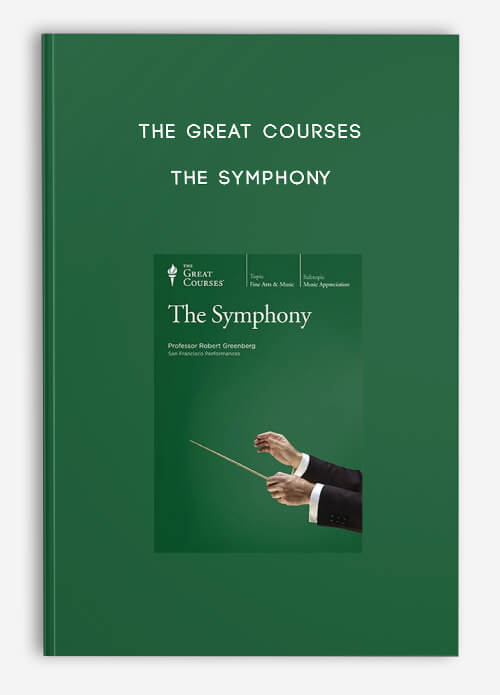
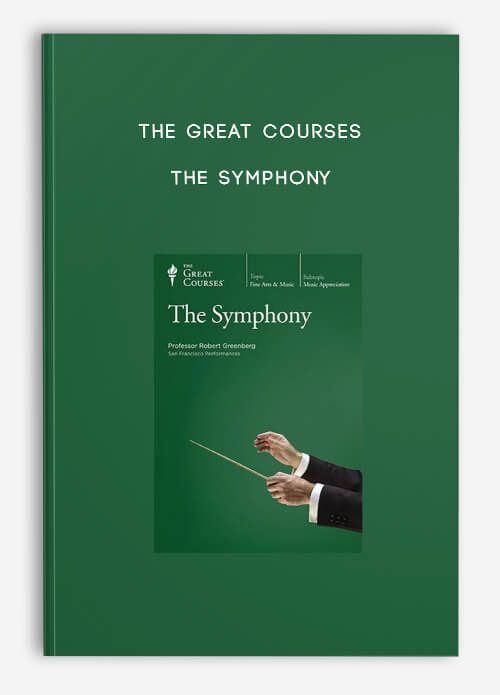
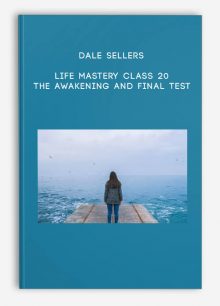


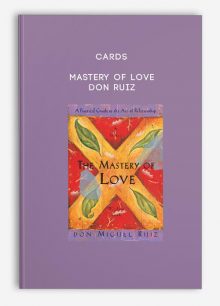


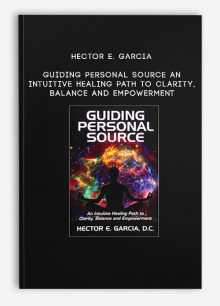
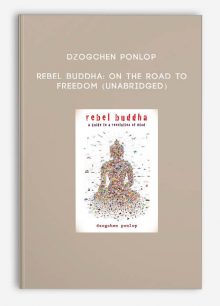
king –
We encourage you to check Content Proof carefully before paying.“Excepted” these contents: “Online coaching, Software, Facebook group, Skype and Email support from Author.”If you have enough money and feel good. We encourage you to buy this product from the original Author to get full other “Excepted” contents from them.Thank you!